
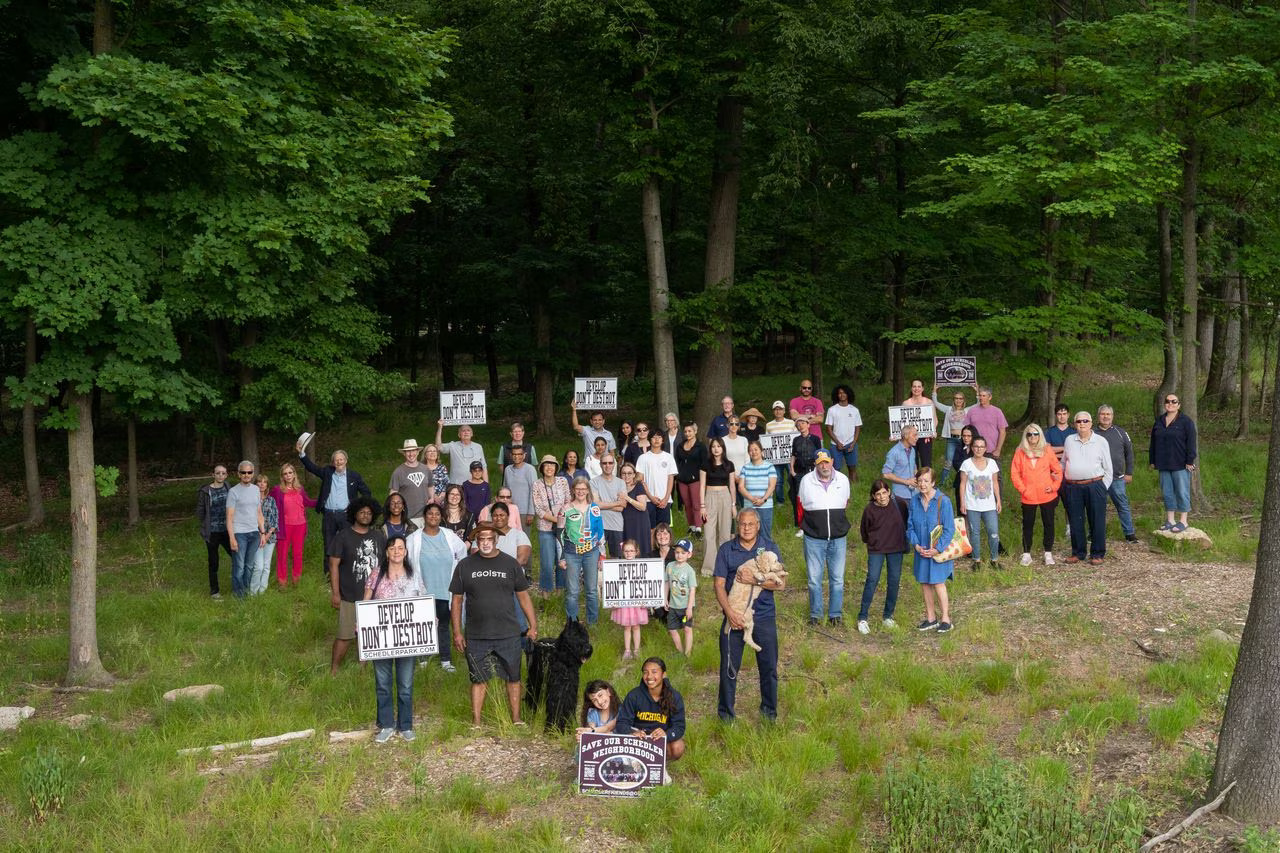
Residents who oppose artificial turf at the historic Schedler property in Ridgewood are part of a growing wave of opposition to synthetic turf in the state. Julian Leshay | For NJ Advance Media
By Jackie Roman | NJ Advance Media for NJ.com
On a hot summer morning, a dozen residents of Scotch Plains gathered under tall shade trees near a pavilion and picnic area in the largest preserved green space in their town — Brookside Park.
The brook that gave the lush park its name winds through the area near a baseball and softball field surrounded by green grass and towering trees.
But, on this morning the residents are gathered in the Union County park to speak out about a plan that could soon replace some of the natural field with plastic grass blades and rubber infill under a $3.8 million bond ordinance that would convert the baseball field to artificial turf.
“When I first heard about the project, I was like, huh, that seems a little strange — just because I know the specifics of this park and the natural beauty of it,” said Scotch Plains resident Ivy Kesller.
“This is the park they use for summer camp. This is the park that they hold Earth Day at. It just seemed odd to put artificial turf there,” she added.
The Friends of Brookside Park group collected more than 2,000 signatures calling for a referendum on the artificial turf project after it was approved by local officials. Scotch Plains voters will decide whether to move ahead with the bond ordinance that would pay for the project in a ballot question in November.
The showdown in Scotch Plains is one of several fights over artificial turf being waged across New Jersey as some residents raise concerns about the environmental, health and safety costs of ripping out natural grass and replacing it with artificial fields.
Maplewood residents successfully petitioned in 2021 to put a $1.8 million bond ordinance for artificial turf at DeHart Park in Essex County up to vote. The project was ultimately defeated at the polls.
The Princeton Academy of the Sacred Heart, a private school for boys in grades K-8 in Mercer County, withdrew its proposal to replace grass playing fields with artificial turf in 2021 after some residents objected to the environmental impact of synthetic fields and other issues with the project.
More recently, members of the Citizens for Responsible Athletic Field Development in Westfield protested an $11.8 million bond ordinance that would fund the installation of an artificial turf field at the Edison Intermediate School.
Following in the footsteps of Maplewood and Scotch Plains, the group collected more than 2,800 signatures on a petition calling for the bond ordinance to be brought to a public vote. The Westfield project will go before voters in November.
And a similar fight is underway in Ridgewood in Bergen County, where residents are gathering names on a petition to block an artificial turf field from being built on a historic property where George Washington allegedly once stayed.
Despite the protests, artificial turf fields still have their fans in New Jersey. Replacing natural grass playing fields can save taxpayers money and provide reliable playing surfaces for kids, they say.
Turf companies and local officials in support of synthetic fields say the material reduces water usage and maintenance costs, eliminates the need for dangerous pesticides and fertilizers, and increases play time for athletes.
Unlike natural grass, artificial turf doesn’t require seeding, watering or cutting of any kind. Turf won’t pool into mud puddles if it rains or dry up in a drought. Many of the leading turf companies also say they are committed to using recycled materials in their products.
But, residents in some communities are resisting replacing grass fields in New Jersey.
“There is a growing awareness that artificial turf and the toxic chemicals contained in the plastic grass carpet and infill are harming people and our shared planet,” said Jean Lehmberg, one of the Westfield residents fighting a turf project in her community.
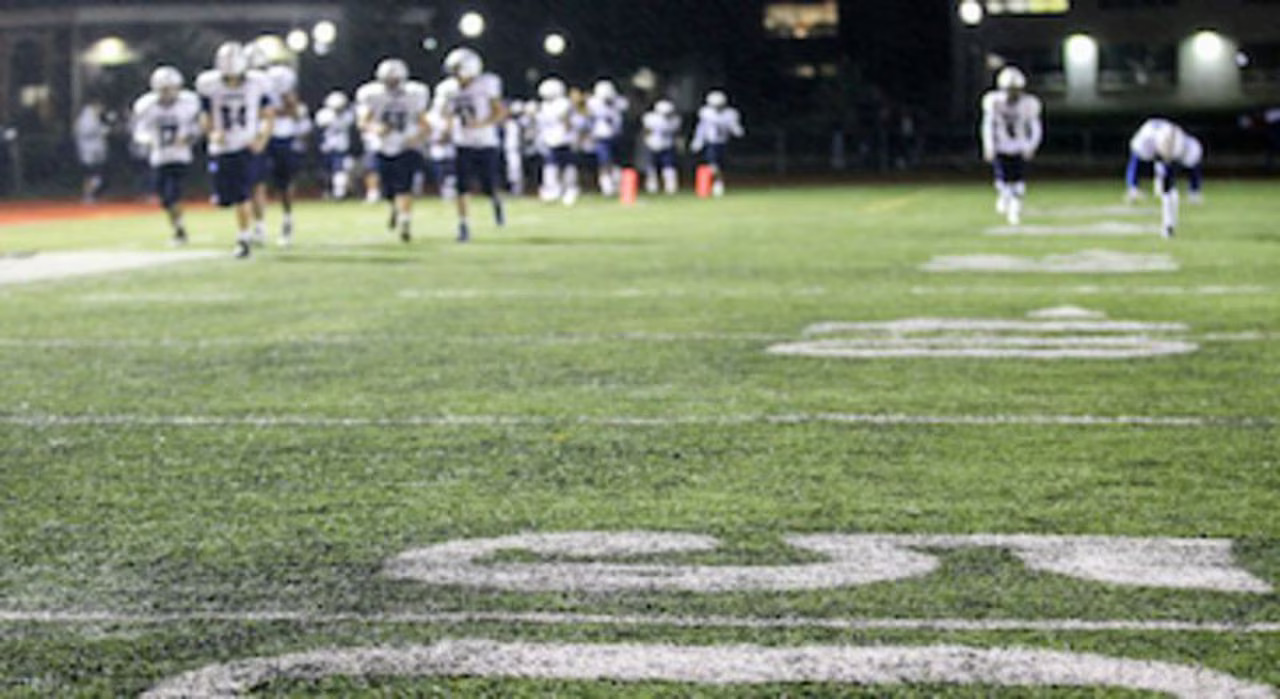
Artificial turf is marketed for its safety, playability, and appearance, but critics say the product hasn’t always lived up to the hype.
The history of artificial turf
Synthetic artificial turf was first introduced in the 1960s as a way to replace costly and maintenance-heavy grass fields with an easy-to-maintain turf that mimics the “look and playability of lush grass,” according to the Synthetic Turf Council, a nonprofit trade association that serves the industry.Typically, artificial turf fields have three main layers: a padding at the bottom, a crumb rubber infill at the center, and a top layer of plastic blades that resemble grass.
Over the last 60 years, synthetic turf fields have spread across the world. As of 2020, North America alone had installed about $2.7 billion worth of artificial turf, from sports fields to residential lawns, according to the Synthetic Turf Council. That’s the equivalent of approximately 265 million square feet of turf, enough to cover the massive Mall of America 47 times over.
The state Department of Environmental Protection does not track the number of artificial turf fields installed in New Jersey, a spokesman said. But FieldTurf, one of the biggest names in artificial turf, said it alone has completed more than 800 installations in the state.
The largest makers of artificial turf say their fields usually last an average of eight years or longer before they have to be replaced.
“My goal is to promote the industry by highlighting how synthetic turf improves communities, enhances homeowners’ backyards, and ultimately brings people together,” said Shaun Garrity, chairman of the Synthetic Turf Council and national sales manager at The Motz Group, a synthetic turf company.
But, critics say artificial turf hasn’t always lived up to the hype. In addition to residents who raise concerns about the environmental impact of plastic grass and rubber infill, some customers have also questioned the quality of the artificial turf they purchased.
In 2016, a six-month NJ Advance Media investigation found FieldTurf, the top U.S. maker of artificial sports fields, made millions by allegedly selling faulty fields. The company was accused of selling high-end turf to taxpayers in towns and schools across New Jersey and the United States despite knowing their fields were falling apart.
The product, Duraspine, allegedly lasted half as long as promised and deteriorated rapidly, leaving athletes vulnerable to injury. From 2005 until Duraspine was discontinued in 2012, records show FieldTurf sold 1,428 of the fields throughout the U.S. — including 164 in New Jersey — for an estimated $570 million in revenue selling the defective product.
There were 15 lawsuits filed against FieldTurf after NJ Advance Media’s investigation, “The 100-Yard Deception.”
FieldTurf paid out millions in settlements and refunds, and promised to do better. In March, MetLife Stadium in East Rutherford, home of the New York Giants and New York Jets, installed an updated version of FieldTurf.
“It’s a privilege to again be trusted by these world-class organizations — we can’t wait for them to take the field next season,” said Eric Daliere, president of FieldTurf’s parent company Tarkett Sports, in a press release.
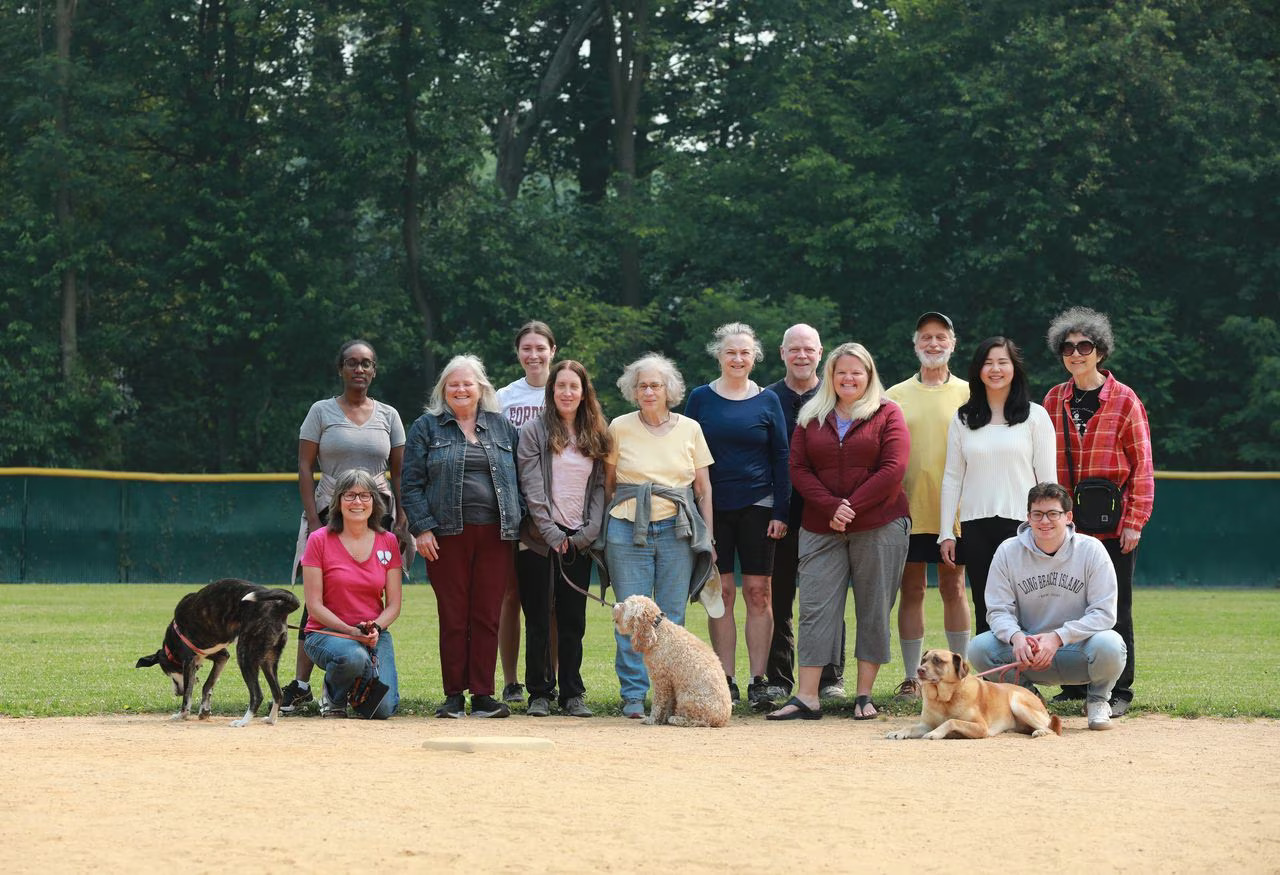
Members of the Friends of Brookside Park, a community group in Scotch Plains, are fighting a $3.8 million bond ordinance that would convert a grass field in Brookside Park into artificial turf. Members of the group, pictured here, stand in the ball field that will be changed to a multi-purpose synthetic turf field under the plan. Amanda Brown| For NJ Advance Med
Playing on a field of microplastics
As the popularity of artificial turf has grown, so has the grassroots movement against the spread of synthetic fields.
In Scotch Plains, the plan to replace the natural grass field at Brookside Park with artificial turf has raised questions about the cost of maintaining grass and the longterm impact of covering a sports field with plastic.
In a press release, the Friends of Brookside Park said its membership “favors organically managed natural grass fields as a safer alternative to plastic grass, and supports upgrades and maintenance of the park and its ball field to serve all the residents of Scotch Plains in a fiscally and environmentally responsible way.”
Scotch Plains’ mayor said he voted in favor of the plan to install artificial turf back in April because it would increase access to sports field space for kids of all ages. But, he praised the residents fighting the plan for collecting signatures to force a public vote on the bond ordinance for the project.
“I salute those civic-minded residents who collected the signatures for this petition, as they truly care about Scotch Plains,” Mayor Joshua Losardo said.
Worknesh Belay, who visits Brookside Park nearly every day with her 2-year-old daughter to play on the grass, said she doesn’t mind being among the taxpayers who pay for the additional maintenance costs if the field remains natural grass.
“I mean, I have a small child, right? If you’re asking me, am I willing to pay an incremental amount more so my child doesn’t get cancer? Of course, like how is that even a question right? Why would I want to poison my child?” she said.
Public health officials say there is no evidence of a direct connection between artificial turf and people getting cancer. But, some studies have looked at the potential environmental and health impacts of the chemicals in artificial turf.
A study published in March by the federal National Institutes of Health found synthetic artificial turf contained semi-volatile organic compounds and heavy metals that can leach into the environment, posing a potential risk to the ecosystem and human health.
Synthetic turf fields have also been shown to have elevated surface temperatures, which can increase the risk of heat-related injuries, especially in children, the state Department of Environmental Health said.
Some state officials have also spoken out against artificial turf. Gov. Phil Murphy recently said “on the margin, you’d much rather have natural grass,” during an episode of Ask Governor Murphy on WNYC.
“Turf fields are easier to maintain, they’re not muddy, but they’re not as good for our kids and they’re not as good for our environment, in fact, they’re bad for the environment,” Murphy said.
Industry groups defend artificial turf and maintain it is safe for humans and the environment.
“The estimated amount of synthetic turf currently installed has eliminated the need for millions of pounds of harmful pesticides and fertilizers, which has significant health and environmental implications,” the Synthetic Turf Council states regarding environmental impact.
“In addition, synthetic turf helps reduce noxious emissions…and reduces grass clippings, which the EPA states are the third largest component of municipal solid waste in landfills,” the Synthetic Turf Council states.
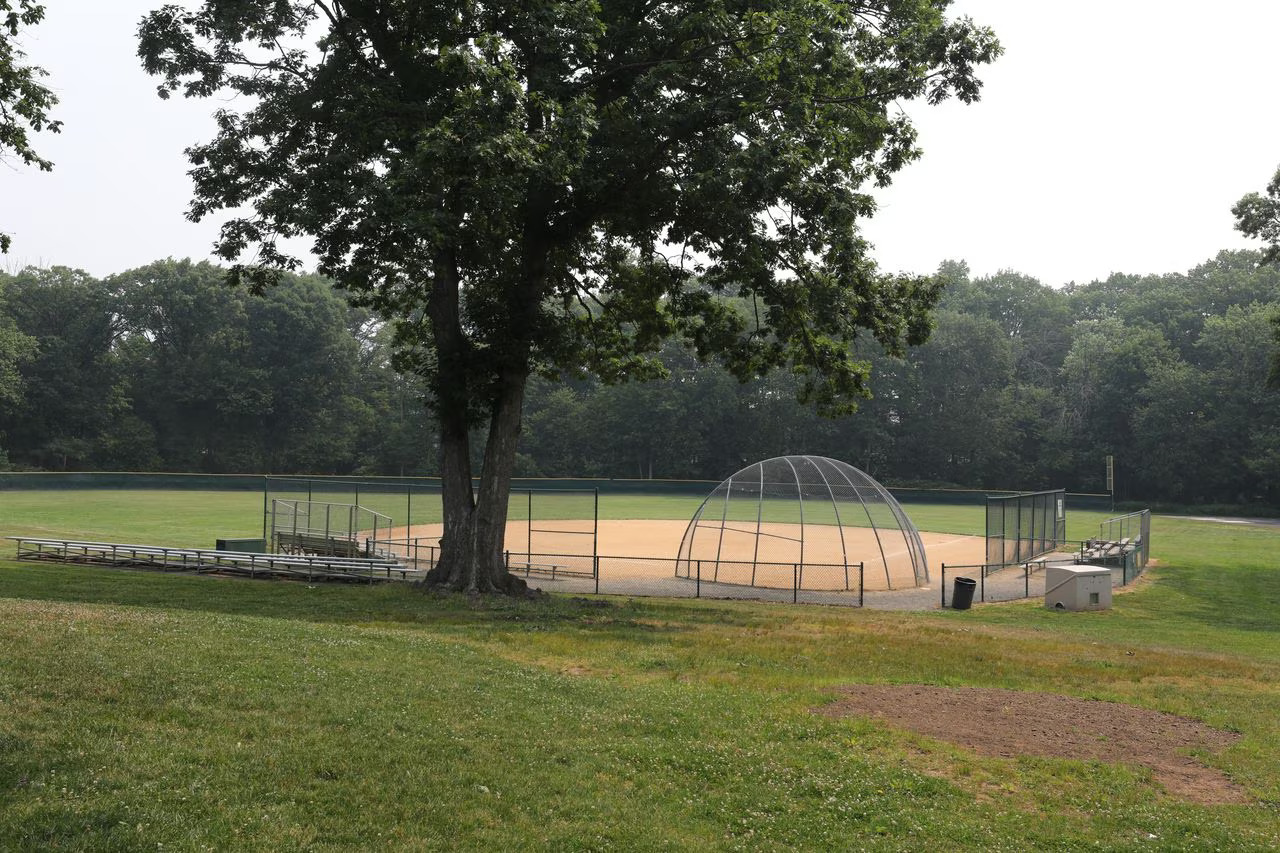
The Friends of Brookside Park-Scotch Plains are against the town’s proposal to convert a grass ball field into a field made of artificial turf. June 7,2023 Amanda Brown| For NJ Advance Med
In March, the state’s Division of Science and Research completed a review of the potential contribution of PFAS — or forever chemicals — to the environment from artificial turf.
Based on the findings, the state will continue to fund the construction of synthetic turf fields through its Green Acres program for open space. But, communities applying for state funds to construct artificial turf fields are “encouraged to conduct their own due diligence” and “address in their application the reasons for choosing synthetic over natural turf,” state officials said.
Some organizations have started recommending communities avoid artificial turf.
The New Jersey Work Environment Council — an alliance of labor, community and environmental organizations — says the “most sensible approach” may be to avoid synthetic turf until scientists prove it’s safe.
“We would recommend the most protective course of action, which usually means not doing the new technology because we don’t know enough about it,” said Allen Barkkume, an industrial hygienist who consults with both the New Jersey Work Environment Council and the New Jersey Education Association, the state’s largest teacher’s union.
“It’s toxic waste,” he said. “The infill that’s called crumb rubber, microscopic little rubber pieces, it’s toxic waste. I would love to not call it anything other than what it is.”
Some of the largest youth athletic associations in the state have not taken a stance on whether children should play on artificial turf fields.
“At this time, NJAYF does not recommend nor advise against the use of artificial turf,” said New Jersey American Youth Football and Cheer President Kevin Hester in a statement.
“Our non-profit associations should utilize what is available to them via their township and/or local high school(s) to ensure the children of our communities have the opportunity to participate in youth football and cheerleading,” Hester said.
Similarly, when asked if New Jersey State Interscholastic Athletic Association — which oversees sports in 440 public and non-public high schools — had any guidance for athletes regarding artificial turf, a spokesman said the organization leaves local matters to individual schools and districts.
“As a voluntary non-profit organization, the NJSIAA doesn’t have any involvement with school facilities,” the spokesman said.
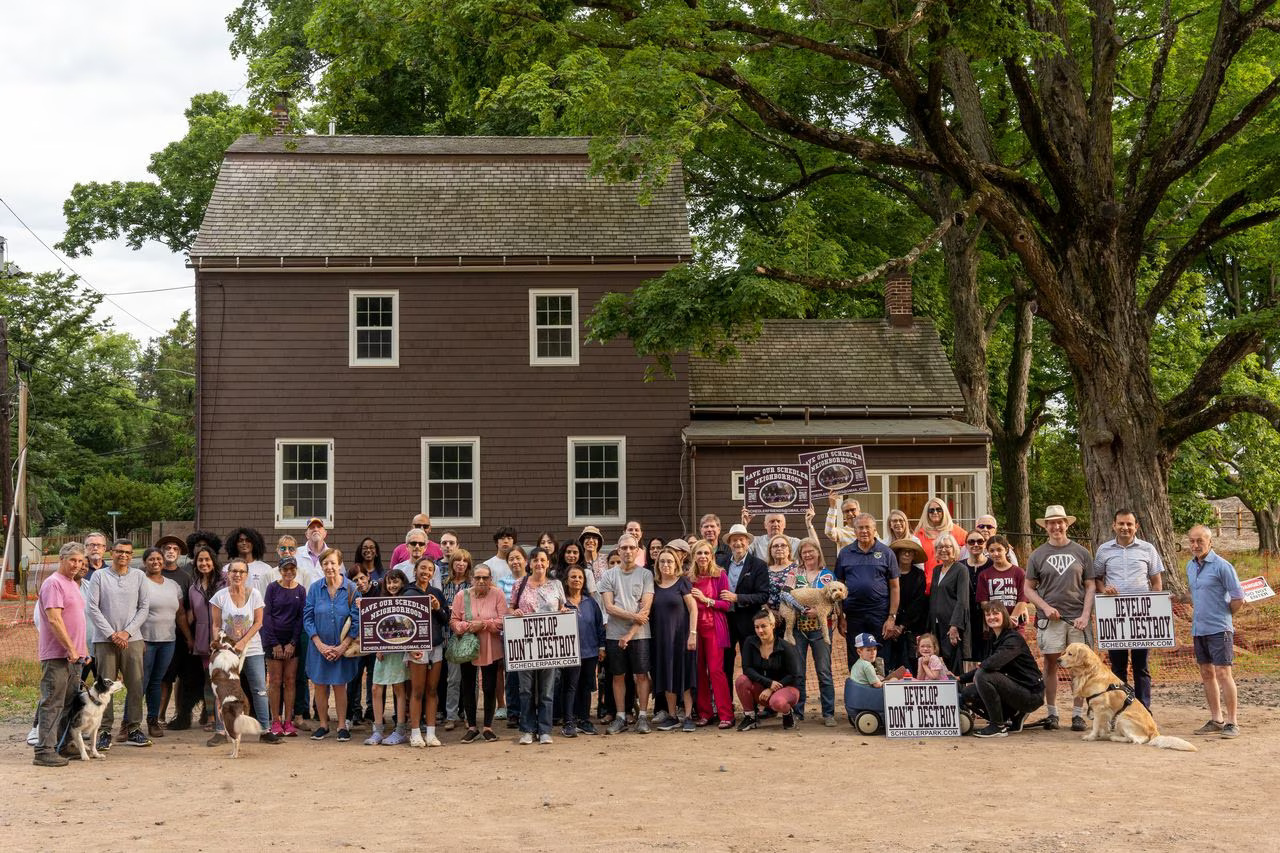
Ridgewood residents gather in front of the historic Zabriskie-Schedler House to oppose a plan to build an artificial turf at Schedler Park in Ridgewood on Monday, June 5, 2023. In April, the Ridgewood Village Council approved a plan to develop Schedler Park that includes artificial turf. Julian Leshay | For NJ Advance Media
Letting the voters decide
Ridgewood resident Joe DeMarco is in full support of his Bergen County community creating more outdoor spaces where his two young kids can play. But he doesn’t support the council’s latest plan to install a full-sized regulation artificial turf field at the Schedler property, a long-unused, historic plot with chestnut trees and native plants.
“The whole point of getting kids outside is to play in nature and play in natural things like grass, right?” DeMarco asked.
The idea of putting artificial turf down instead “seems short sighted,” he said.
Just as residents in Scotch Plains and Westfield have organized against artificial turf, residents of Ridgewood are circulating a petition demanding the village council reconsider its plan for artificial turf at the Schedler property. The current plan, approved by the village council in April, would install a full-sized regulation artificial turf field on the 7-acre site.
“Changes to the approved plan require a comprehensive review process, transparent to all village residents and consistent with other village decisions,” the petition reads.
The Schedler property is a unique parcel of land located between Route 17 and Saddle River Road that was believed to have been used by George Washington during the American Revolutionary War. The site is also home to the historic Zabriskie-Schedler House, which dates back to the 1800s and is listed on both the New Jersey and national register of historic places.
After the village council approved its plan for artificial turf at the Schedler property, the Friends of the Historic Zabriskie-Schedler House, an organization that protects the historic house on the property, withdrew a $40,000 donation the group pledged to the village that was intended for repairs to the house.
Bruce Afran, an attorney representing the Friends of the Historic Zabriskie-Schedler House, said artificial turf was not the basis of his client’s opposition, but it was a contributing factor.
“The group is not focusing on artificial turf, but it is critical of the use of it,” Afran said.
Ridgewood Mayor Paul Vagianos did not respond to requests to comment.
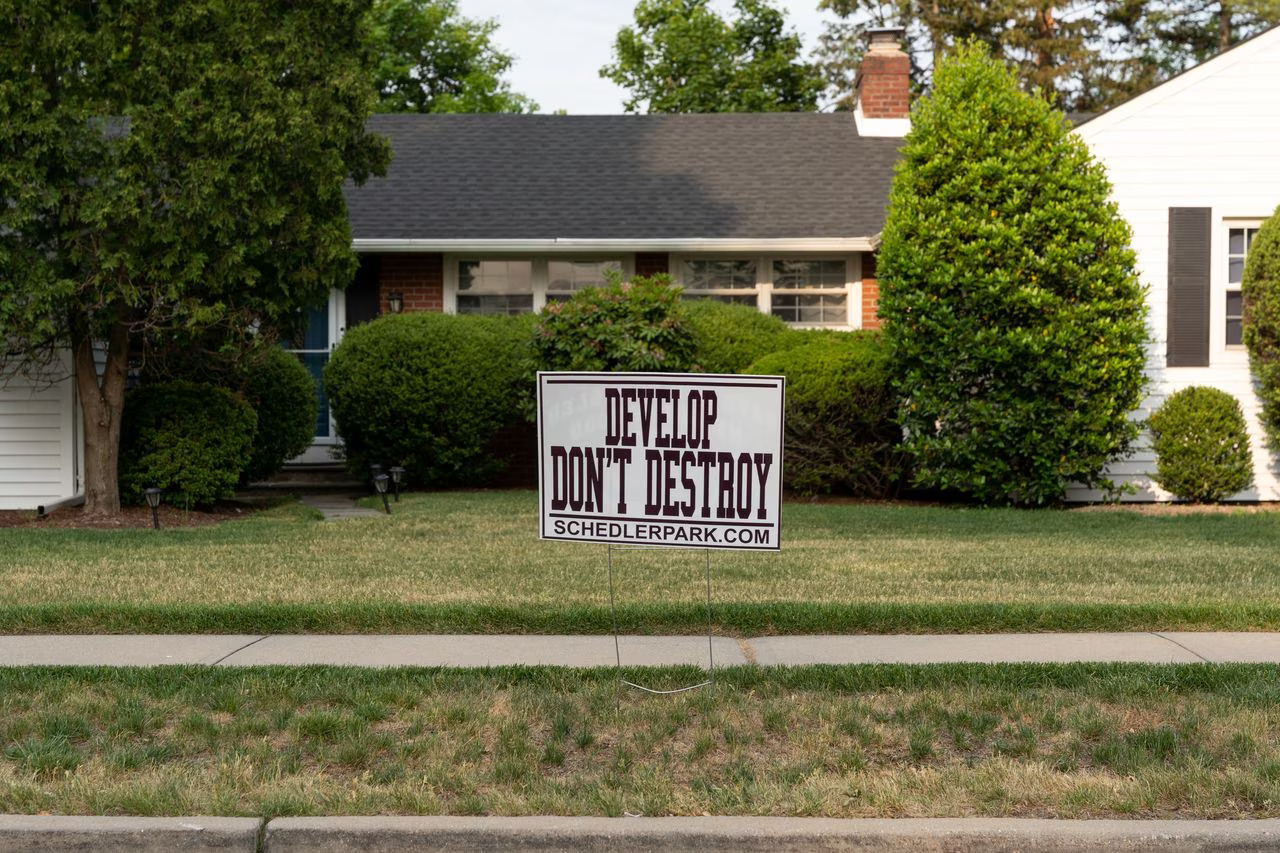
A lawn sign opposing the decision of the Village Council of Ridgewood to develop an artificial turf in Schedler Park is seen in Ridgewood on Monday, June 5, 2023. In April, the Ridgewood Village Council approved a plan to develop Schedler Park that includes artificial turf. Julian Leshay | For NJ Advance Media
Athletes have also been weighing in on the debate over artificial turf.
The National Football League Players Association, a labor union representing NFL players, said its membership strongly prefers natural grass field surfaces over artificial turf, citing data that shows “grass is a significantly safer surface than turf.”
“Players have shared stories about how their bodies feel after playing on turf compared to grass, and the injury data for nearly a decade supports those anecdotes,” players association President JC Tretter, formerly of the Green Bay Packers and Cleveland Browns, said in an April statement criticizing the National Football League’s use of artificial turf.
The U.S. women’s national soccer team also fought for years against the requirement to play domestic matches on artificial turf, stating it was tougher on player’s bodies than natural grass.
In 2020, the women’s team settled a discrimination lawsuit that included claims of unequal working conditions. As part of the settlement, U.S. women’s national soccer team games in the United States are now played on grass “in almost all circumstances.”
Some turf companies say there are sustainable alternatives to synthetic materials used in artificial turf. Some manufacturers have begun offering organic turf that have wood or coconut shavings as infill instead of rubber pellets. Shaw Sports Turf, for example, has a product called Geofill that it says is made of 100% natural material.
“This material alleviates the concerns with questionable chemicals from any synthetic infill material,” the company states on its website.
But, the promises of a new generation of artificial turf have not quelled the debates in many towns over what to do with fields.
Parents like DeMarco — who has a 6-year-old, a 2-year-old and another on the way in Ridgewood — say they would rather stick with grass while the environmental and safety concerns about artificial surfaces are still being debated.
“These are our kids, shouldn’t we protect them?” DeMarco asked.
This story was produced in collaboration with CivicStory as part of the New Jersey Sustainability Reporting project.